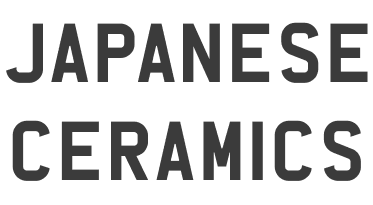- Manufacturer: plusminuszero
- Designer: Naoto Fukasawa
- Material: polypropylene
- Dimensions: 15 × 30 cm
- www.plusminuszero.jp

Index
- ±0 In 2003 Naoto Fukasawa designed the humidifier for ±0, the Japanese housewares and consumer-electronics brand he launched the same year. Means neithe
- Designer Naoto Fukasawa, born in Yamanashi Prefecture in 1956, graduated from Tama Art University in 1980. After working 8 years for Seiko-Epson, he left Japan
- Features 'The plusminuszero humidifier will put moisture back in your skin, but its sleek donut-shaped body is something you can display like a piece of modern
- Form The goal of the Japanese design house plusminuszero is to turn everyday object into art... and, as anyone who lives in a dry climate knows, humidifier
- Aesthetics Fukinsei (imbalanced): Asymmetry, odd numbers, irregularity, unevenness, imbalance is used as a denial of perfection as perfection and symmetry does n
- Vapour The traditional radiator humidifier is an angular metal reservoir attached to a thin metal arm that slides inside a freestanding cast-iron radiator an
- Benefits Humidifiers are a big deal in Japan, as the air gets insanely dry in the winter time despite the ultra-muggy summers that reduce Australians and Calif
- Urushi A Part of Life Lacquer (urushi) has been an integral part of the Japanese lifestyle; it is taken for granted as part of life and treasured for its ma
- Japanese Ceramics Japan has an exceptionally long and successful history of ceramic production. Earthenwares were created as early as the Jomon period (10,000-300 BCE),
- Super Normal
- Comments
In 2003 Naoto Fukasawa designed the humidifier for ±0, the Japanese housewares and consumer-electronics brand he launched the same year.
Means neither plus nor minus;
Is necessity and sufficiency;
Is something you have never seen but somehow feel at home with;
Is a shape that is very normal yet fascinating;
Is the moment you realise, for the first time, that this is what you have wanted.
We seldom come across such a thing, shape, or moment despite there being an overflow of 'things' around us.
That is why ±0 resets everything back to ±0;
to identify what people have really wanted,
to exercise the wisdom, that is to say, design,
and to crystallise ideas into real products, one by one.
Naoto Fukasawa, born in Yamanashi Prefecture in 1956, graduated from Tama Art University in 1980. After working 8 years for Seiko-Epson, he left Japan for the US – joining ID Two, which then became part of IDEO which he was part of for another 8 years.
Returning back to Japan, he helped set up IDEO's Tokyo office which he ran for 5 years. He established Naoto Fukasawa Design in 2002 and later was creative director and responsible of the launch of ±0 in December 2003. His other famous works include Muji's CD player, the mobile phones 'Infobar' and 'Neon' and the ±0 brand of household electrical appliances and sundries.
If you look closely, he rarely uses right angles in his designs; his preferred angle is r2.5mm. The beauty of his designs lies in the way he expresses himself via the details, which are designed through thinking through how a person can use a product simply.
His designs also take into account the human element by favouring the emotional over the intellectual.
Without Thought
A Fukasawa design creates dialogue. His philosophy is to create 'without thought'. Being subconscious does not mean to be without thinking.
It means that our brain may not be conscious about something, but parts of our body such as hands and legs recognize the environments and react to the situations or to things.
This may explain the 'I've seen this before' reaction to many of his designs, although they are entirely new. There is a commonness that appeals too, an almost phantom-like memory. To understand him better one must dig deeper into his history and background.
Super Normal
'Normal' is the situation where something has blended comfortably into our lives. One would venture to say that such things are used unconsciously. I understand it as term that indicates an entity that is integrated into our lifescape. Within this normal is a particulary symbolic archetype that is "really normal," and this is what has been termed "Super Normal." Super Normal is the normal within the normal.
'The plusminuszero humidifier will put moisture back in your skin, but its sleek donut-shaped body is something you can display like a piece of modern sculpture. Something about the shape of this really invites touching, but it gets very hot when it's on, so you'll have to resist. It doubles as an aromatherapy diffuser, so a few drops of fragrance oil will infuse the steam with whatever scent you like.'
Instructions
This part, which defines the whole apperance of the humidifier, functions as the water tank. It can be detached and carried like this, when you fill it with water. Flip it upside down, remove the cap and pour in about 2.4 litres of water with the funnel attached. Water can be poured up to the inner line of this cone-shaped water-level window. The water poured in the tank goes into this pot and then is heated for humidification.
Please remember to place two pieces of cleaning filters in the heating pot; they remove minerals contained in the tapped water.

The goal of the Japanese design house plusminuszero is to turn everyday object into art... and, as anyone who lives in a dry climate knows, humidifiers aren't exactly the most aesthetic object in your house. That's all about to change with the Humidifier Version III. With its compact frame and beautifully smooth surfaces, it not only works perfectly to control the climate but actually looks great while doing its job.
'In Japan, the relationship between the object and its environment is more important than the object itself. A fork is good for a particular situation, not for everything. It isn't just an object, it's part of a harmony. My work stopped being about making interesting shapes, and more about the relationship with the object.'
When it comes to exploring the visual possibilities that lie between plain and fancy, few cultures have been as thorough as Japan. In Japanese culture all objects, from the lowliest tool to the most elaborately embroidered kimono or ostentatious lacquer writing box, have an equal right to be beautiful, in their own way.
Such equality reflects in part the Japanese reverence for nature, which is seen as omnipresent and diverse and as playing no favourites. For two millenniums, nature has supplied the Japanese with an endless stream of formal inspiration, encouraged a keen attention to natural materials and shown that beauty has many faces, faces that can be fleeting, humble or minutely evident. And nature most surely inspired the appreciation of accident - especially evident in Japanese ceramics - that is among the most original aspects of Japanese culture.
It feels somehow familiar while looking like nothing else on the market. 'Even though people haven't seen these products before, they subconsciously recognize the essence of normality within them,' says Fukasawa.
- Fukinsei (imbalanced): Asymmetry, odd numbers, irregularity, unevenness, imbalance is used as a denial of perfection as perfection and symmetry does not occur in nature.
- Kanso (simple): Elimination of ornate and things of simplicity by nature expresses their truthfulness. Neat, frank and uncomplicated.
- Kokou (austere): Basic, weathered bare essentials that are aged and unsensuous. Evokes sternness, forbiddance, maturity and weight.
- Shizen (natural): Raw, natural and unforced creativity without pretence. True naturalness is to negate the naive and accidental.
- Yugen (subtle profound): Suggest and not reveal layers of meaning hidden within. Invisible to the casual eye and avoiding the obvious.
- Datsuzoku (unworldly): Transcendence of conventional and traditional. Free from the bondage of laws and restrictions. True creativity.
- Seijaku (calm): Silence and tranquility, blissful solitude. Absence of disturbance and noise from one's mind, body and surroundings.
By thinking about unexpected functions, Fukasawa says he picks up on existing human behaviours and reflects them in his work. "I call it 'design with a subconscious mind,' " he says. This philosophy helps explain why he has designed this humidifier.
The traditional radiator humidifier is an angular metal reservoir attached to a thin metal arm that slides inside a freestanding cast-iron radiator and rests on the horizontal interior struts.

Evaporative Humidifiers
A humidifier is a household appliance that increases humidity (moisture) in a single room or in the entire home. There are point-of-use humidifiers, which are commonly used to humidify a single room, and whole-house or furnace humidifiers, which connect to a home's HVAC system to provide humidity to the entire house.
The most common humidifier, an 'evaporative' or 'wick humidifier', consists of just a few basic parts: a reservoir, wick and fan.
The wick is a filter that absorbs water from the reservoir. Evaporation of water from the wick is dependent on relative humidity. A room with low humidity will have a higher evaporation rate compared to a room with high humidity. Therefore, this type of humidifier is self-regulating. As the humidity of the room increases, the water vapour output naturally decreases. These wicks regularly need cleaning and replacement - if this does not happen, the humidifier stops humidifying the area it is in and the water in the tank remains at the same level.
The fan is adjacent to the wick and blows air onto the wick, thus aiding in the evaporation of the water within.
Vapourizer (Steam Humidifier) (Warm Mist Humidifier) — Boils water, releasing steam and moisture into the air. A medicated inhalant can also be added to the steam vapour to help reduce coughs. Vapourizers may be more healthful than cool mist types of humidifiers because steam is less likely to convey mineral impurities or microorganisms from the standing water in the reservoir. Boiling water requires significantly more energy than other techniques.
Ultrasound
There are three kinds of humidifiers besides evaporative and warm-mist units:
Ultrasonic, impeller or cool-mist, and steam. Ultrasonic devices use high-frequency sound to break up water into mist. Cool-mist units do the same thing mechanically. Steam units, as their name implies, make steam by boiling water.
Humidifiers are a big deal in Japan, as the air gets insanely dry in the winter time despite the ultra-muggy summers that reduce Australians and Californians to puddles of sweat. Just before winter there are always new and innovative humidifiers, or improved versions of previous models.
Dry air can lead to a host of problems especially for allergy and asthma sufferers. Dry climates, winter air, and artificial heat all contribute to the discomfort caused by dry skin, dry throats, and irritated noses (which can lead to sinusitis). Winter is an especially bad time for dry air. Home heating systems, especially forced-air systems, often reduce the amount of moisture in the air which leads to a home environment that is dry.
Dry air doesn't only affect the people who live in the home. Dry air can also damage furniture, wood floors, and paint in your home. A humidifier not only helps those in your home breathe better, but it also helps maintain the air in your home at a comfortable level for everything inside it. Furthermore, air that's too dry makes the temperature feel colder than it actually is. Humidification works in conjunction with heating devices to keep you snug and warm during the winter and they save you money on your heating bills.
The benefits of humidifiers during the heating season are many
- Help relieve cold symptoms by making the air you breath moist, which helps keep your lungs more elastic.
- Reduce susceptibility to infection by keeping the mucus membranes of your throat and nasal passages moist allowing the tiny hairs (cilia) in both to work at expelling foreign objects such as mold, pet dander and bacteria.
- Relieve and prevent dry, scratchy skin and lips.
- Keep valuable wood furniture from drying out and cracking.
- Reduce static electricity, thus reducing the tiny shocks received from touching certain objects and other people.
- Can help prevent wood floors from buckling and separating.
- Reduce nosebleeds, as the air you breathe is moist.
A Part of Life
Lacquer (urushi) has been an integral part of the Japanese lifestyle; it is taken for granted as part of life and treasured for its many qualities. It has been used as a protective and decorative coating material for at least six thousand years in Japan. Lacquer-coated earthenware pots and wooden combs have been found in Japanese Neolithic sites carbon dated to about 4500 B.C. Urushi may well be mankind's first true paint and superglue.
From early historic times until the present, urushi has been used to coat such things as temple and shrine interiors; furniture and chests; sliding doors; walls and architectural interior trim; eating vessels of every type; casks, ewers, and bottles; personal accessories; chopsticks, lamp stands, paper products, and so on. The list is indeed long. Urushi's soft surface, gentle yet bright gloss and deep colors fit the traditional Japanese room interior - that is, urushi looks and feels right in a room composed of tatami mats, wood, earth, and paper. The traditional Japanese New Year repast is incomplete without lacquer ware. Particularly, special decorative lacquered tiered boxes are brought out at this time to contain the festive fare. Today, urushi is even used to decorate such things as elevator doors and computer cases.

Japan has an exceptionally long and successful history of ceramic production. Earthenwares were created as early as the Jomon period (10,000-300 BCE), giving Japan one of the oldest ceramic traditions in the world. Japan is further distinguished by the unusual esteem that ceramics holds within its artistic tradition, owing to the enduring popularity of the Tea Ceremony.
Hakuji is Japanese white porcelain originally made from a superior white-stoned clay thought to be discovered in the early 1600s at Izumiyama (Izumi Mountain, Arita) by Korean potter Ri Sampei (Yi Sam Pyong). It is always plain white without colored patterns and is often seen as bowls, tea pots, cups and other Japanese tableware.




































































































